
Rediscovering Japan

Rediscovering Japan
Seasonal Events (June)

by tomizuta
Hydrangeas
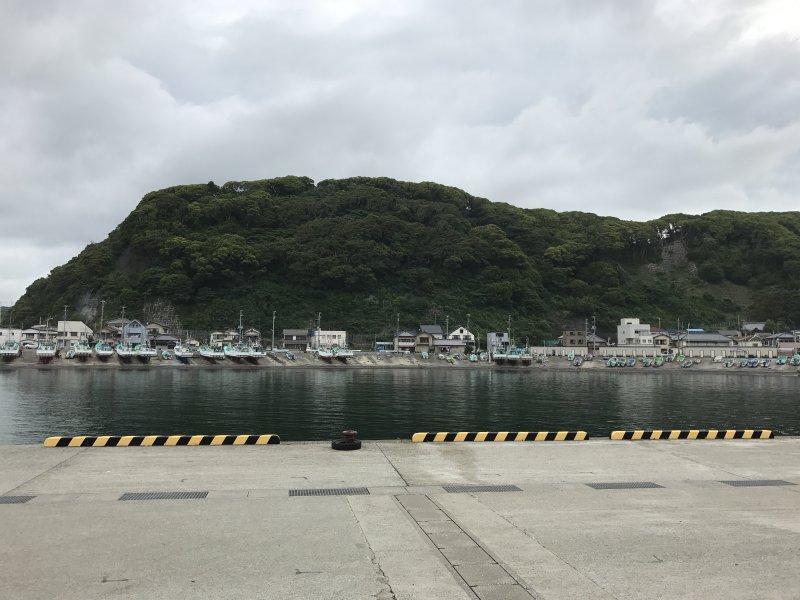 With the designation of Mountain Day in August, June has become the only
month without a national holiday. The sixth month of the year under the
lunar calendar was called Minazuki. Although in Chinese characters Minazuki
is written as the month without water, I understand it originally meant
the month of water. This sounds plausible as the monsoon period in Japan
starts from mid-June and continues to mid-July leading into the hot and
humid summer. During the monsoon period, the skies are typically gloomy
and it rains a lot. Although gloomy, the rainfall is important for farming
as well as to fill the reservoirs with water preventing a drought.
With the designation of Mountain Day in August, June has become the only
month without a national holiday. The sixth month of the year under the
lunar calendar was called Minazuki. Although in Chinese characters Minazuki
is written as the month without water, I understand it originally meant
the month of water. This sounds plausible as the monsoon period in Japan
starts from mid-June and continues to mid-July leading into the hot and
humid summer. During the monsoon period, the skies are typically gloomy
and it rains a lot. Although gloomy, the rainfall is important for farming
as well as to fill the reservoirs with water preventing a drought.
(Left: A typical gloomy sky during the monsoon season at Kominato Port
in south Chiba.)
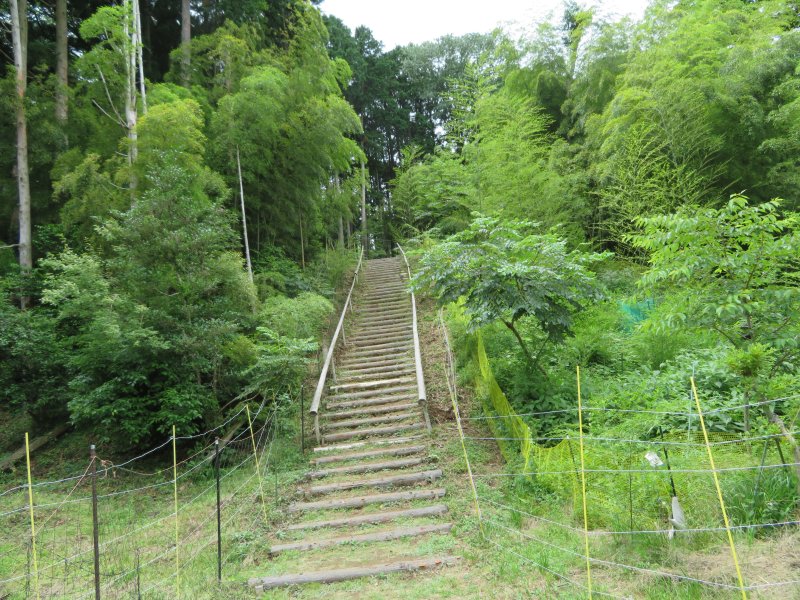 If we think about flowers in June, the first that comes to my mind is hydrangea. Hydrangeas under the rain are particularly striking. This year (2017) we visited the Mamenbara Plateau in the southern part of Bousou Peninsular, Chiba Prefecture.
If we think about flowers in June, the first that comes to my mind is hydrangea. Hydrangeas under the rain are particularly striking. This year (2017) we visited the Mamenbara Plateau in the southern part of Bousou Peninsular, Chiba Prefecture.
( Left: You need to go up these steps to reach the bottom of the temple
grounds that hosts the hydrangeas.)
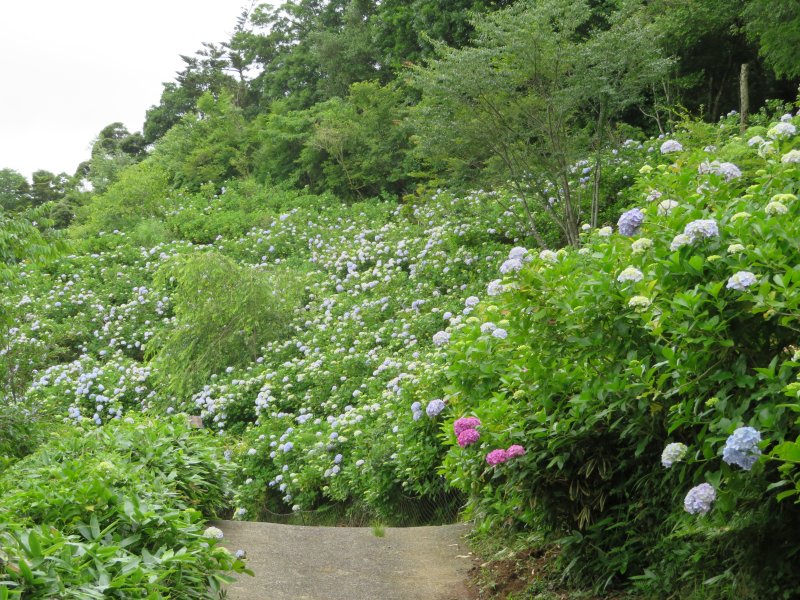 Mamenbara Plateau is famous for its hydrangeas. Shortly after WWII, a Buddhist
priest resurrected a discontinued Buddhist temple and started planting
hydrangeas in the temple grounds of Myouhoushouji Temple belonging to the
Nichiren sect of Buddhism.
Mamenbara Plateau is famous for its hydrangeas. Shortly after WWII, a Buddhist
priest resurrected a discontinued Buddhist temple and started planting
hydrangeas in the temple grounds of Myouhoushouji Temple belonging to the
Nichiren sect of Buddhism.
(Left: Hydrangeas at the fringes of the temple grounds.)
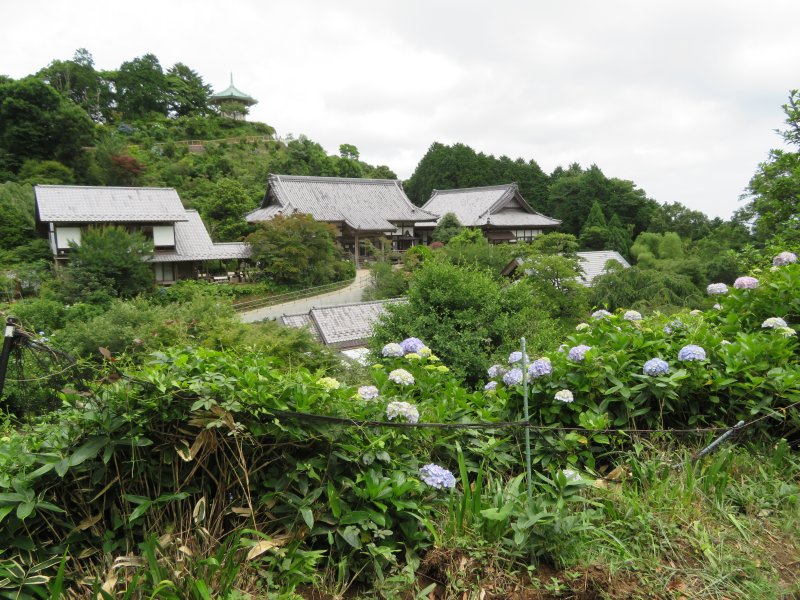 There are approximately twenty thousand hydrangeas planted in this area.
Because the plateau is at an altitude of over three hundred meters above
sea level, full bloom will be half a month later than in the plains. I
visited Mamenbara in the end of June and they were at half bloom as you
can see
There are approximately twenty thousand hydrangeas planted in this area.
Because the plateau is at an altitude of over three hundred meters above
sea level, full bloom will be half a month later than in the plains. I
visited Mamenbara in the end of June and they were at half bloom as you
can see
(Left: View of Myouhoushouji Temple from the highest point of the grounds)
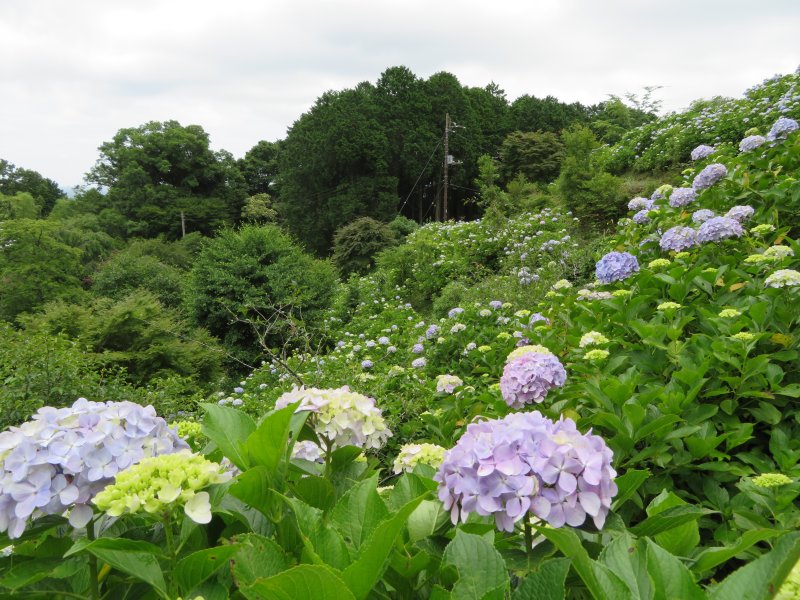 The Japanese sweets for June is Minazuki. It was customary in Kyoto to
enjoy Minazuki on the last day of the month and to pray for prosperity
and good health in the latter half of the year. Unfortunately I forgot
to purchase this sweets which is only sold in June. I will remember to
introduce this next year.
The Japanese sweets for June is Minazuki. It was customary in Kyoto to
enjoy Minazuki on the last day of the month and to pray for prosperity
and good health in the latter half of the year. Unfortunately I forgot
to purchase this sweets which is only sold in June. I will remember to
introduce this next year.
(Left: Looking down to the opposite side of the temple from the top of
the grounds)
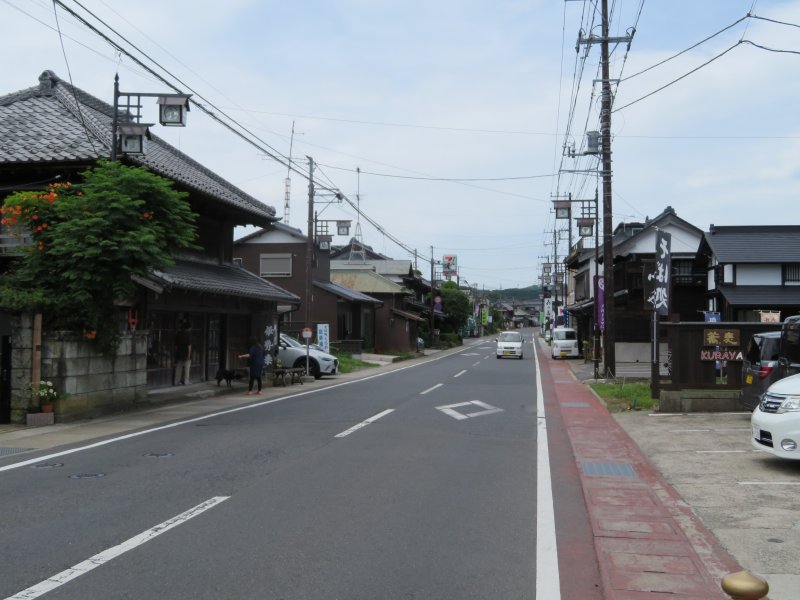 Instead, I would like to introduce a sake that I discovered in Ootaki nearby. Ootaki is an old castle town of Ootaki that was ruled by Katsuie Honda, a prominent subordinate of Ieyasu Tokugawa in the late 16th century. The township has preserved many of its Edo period merchant houses.
Instead, I would like to introduce a sake that I discovered in Ootaki nearby. Ootaki is an old castle town of Ootaki that was ruled by Katsuie Honda, a prominent subordinate of Ieyasu Tokugawa in the late 16th century. The township has preserved many of its Edo period merchant houses.
(Left: The former merchant street of the township of Ootaki Castle in south
Chiba.)
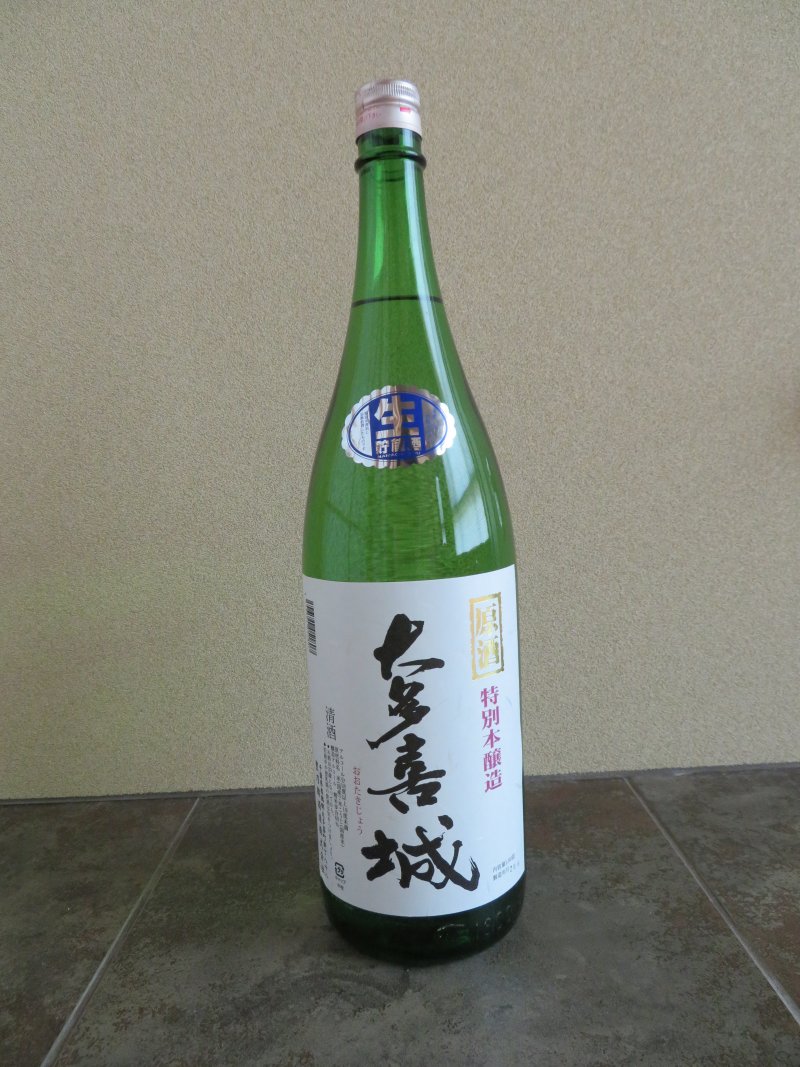 There used to be many sake breweries serving the township. We visited one
surviving brewery Toyonotsuru that sells sake under the brand Ootaki Castle.
I visited the brewery and asked if I could taste their sake. I was interested
in their honjouzou genshu with a higher alcohol content of 18%. It was
dry with a well-balanced fruity aroma. Talking to the elderly owner, I
learned that the brewery was founded in the late 18th century and that
they only sell locally. I liked the sake so much that I bought two bottles
of this sake. I donft know why but the owner seemed so surprised when I
asked to buy two bottles. In any event they sell very good sake which explains
why they have survived this long.
There used to be many sake breweries serving the township. We visited one
surviving brewery Toyonotsuru that sells sake under the brand Ootaki Castle.
I visited the brewery and asked if I could taste their sake. I was interested
in their honjouzou genshu with a higher alcohol content of 18%. It was
dry with a well-balanced fruity aroma. Talking to the elderly owner, I
learned that the brewery was founded in the late 18th century and that
they only sell locally. I liked the sake so much that I bought two bottles
of this sake. I donft know why but the owner seemed so surprised when I
asked to buy two bottles. In any event they sell very good sake which explains
why they have survived this long.
(Left: A 1.8 liter bottle of Ootakijou special honjouzou genshu. It was dry with a well-balanced fruity aroma. )
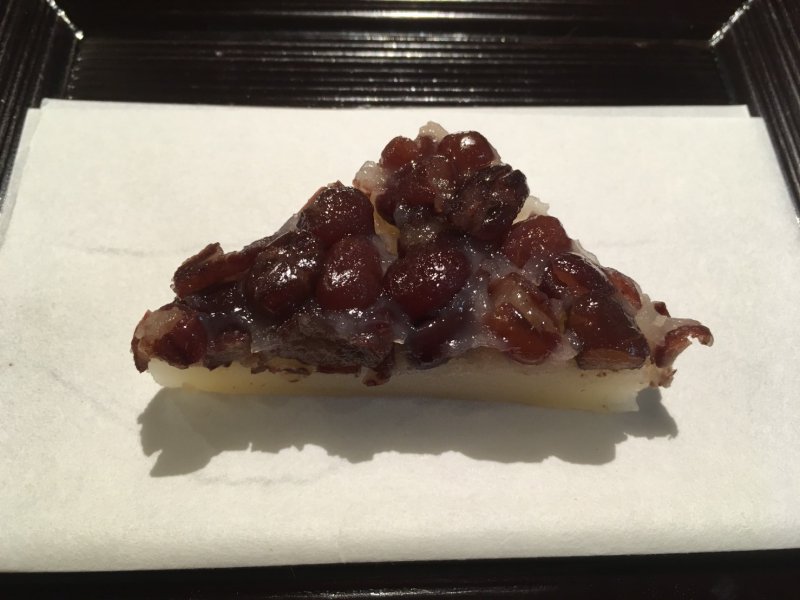 The Japanese sweets (wagashi) of June is a sweets called Minazuki. Minazuki is the old name for the month of June. The wagashi has an uirou (steamed starch pudding) base with a sweet stewed azuki bean covering on top and is triangular shaped. It is a tradition originated from Kyoto to purify oneselves from impurity at the end of half year and prepare for the hot summer. The triangular shape is thought to depict an icicle. Minazuki is only sold for a couple of days towards the end of June. We missed the opportunity last year but managed to secure one this year.
The Japanese sweets (wagashi) of June is a sweets called Minazuki. Minazuki is the old name for the month of June. The wagashi has an uirou (steamed starch pudding) base with a sweet stewed azuki bean covering on top and is triangular shaped. It is a tradition originated from Kyoto to purify oneselves from impurity at the end of half year and prepare for the hot summer. The triangular shape is thought to depict an icicle. Minazuki is only sold for a couple of days towards the end of June. We missed the opportunity last year but managed to secure one this year.
(Left: The sweets Minazuki has an uirou (steamed starch pudding) base with
a sweet stewed azuki bean covering on top and is triangular shaped.)